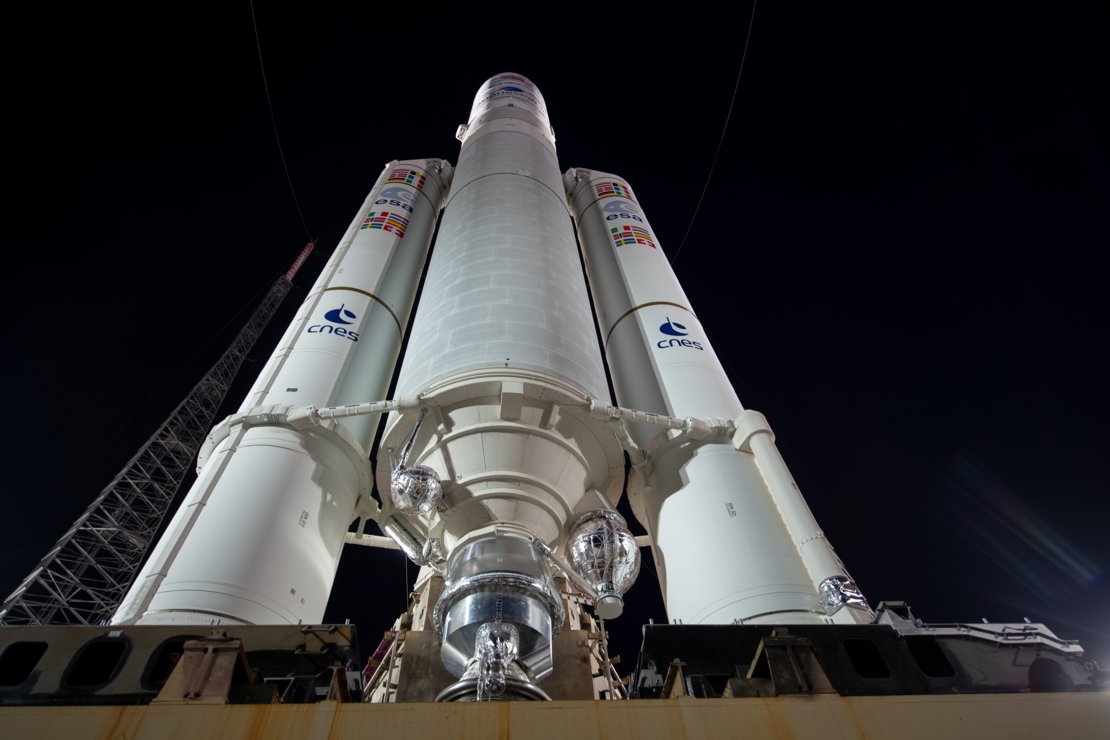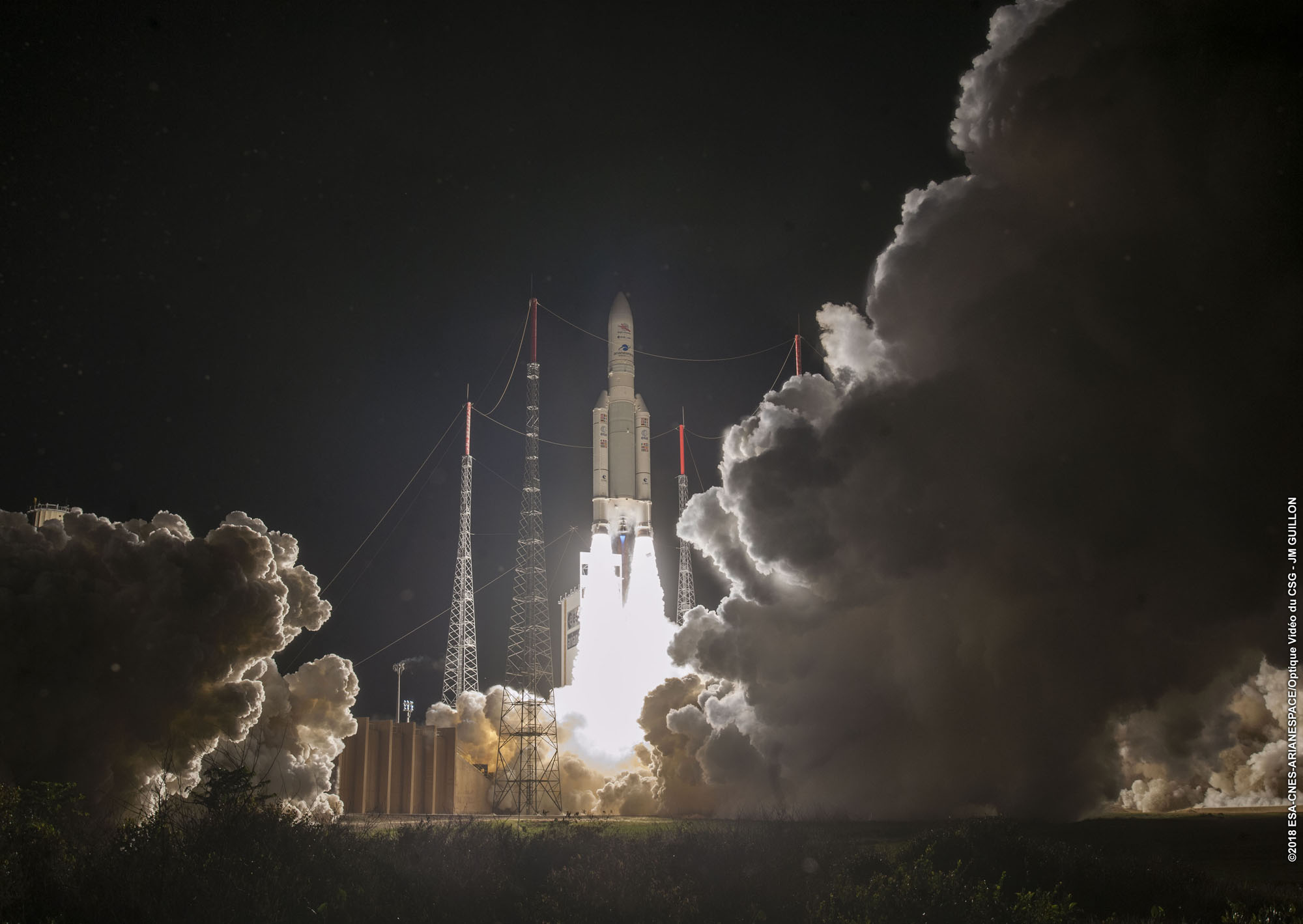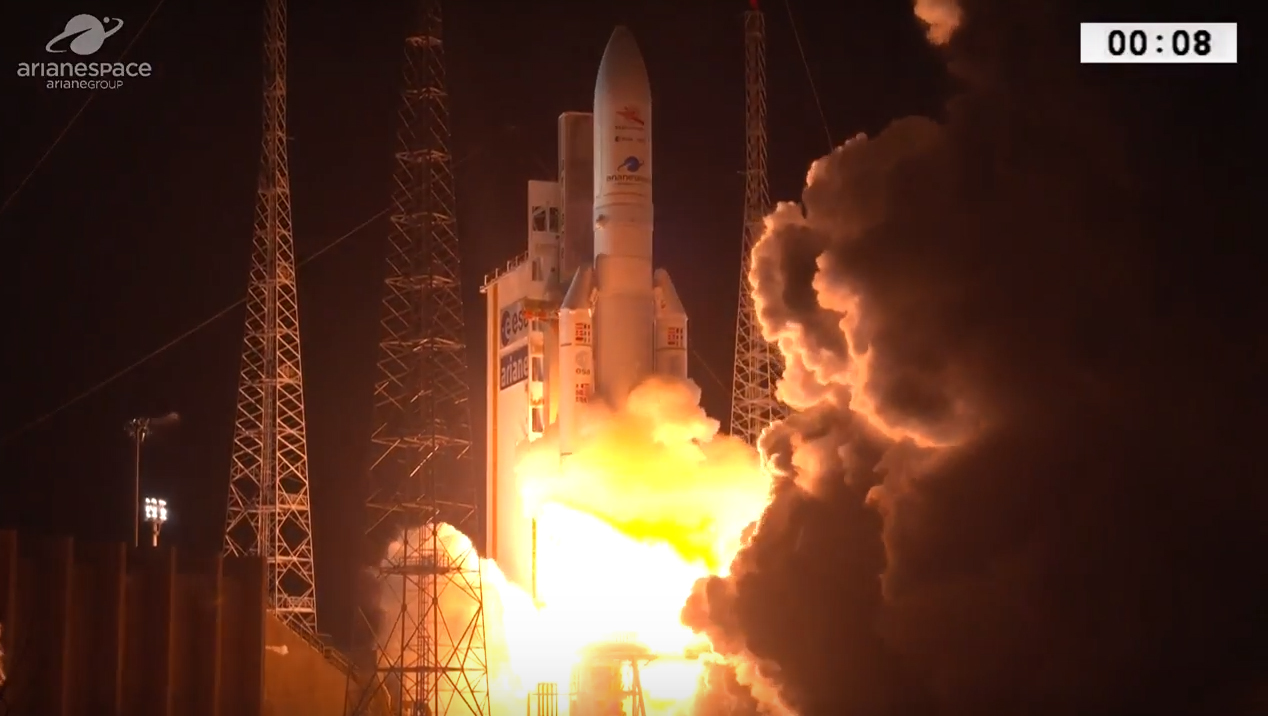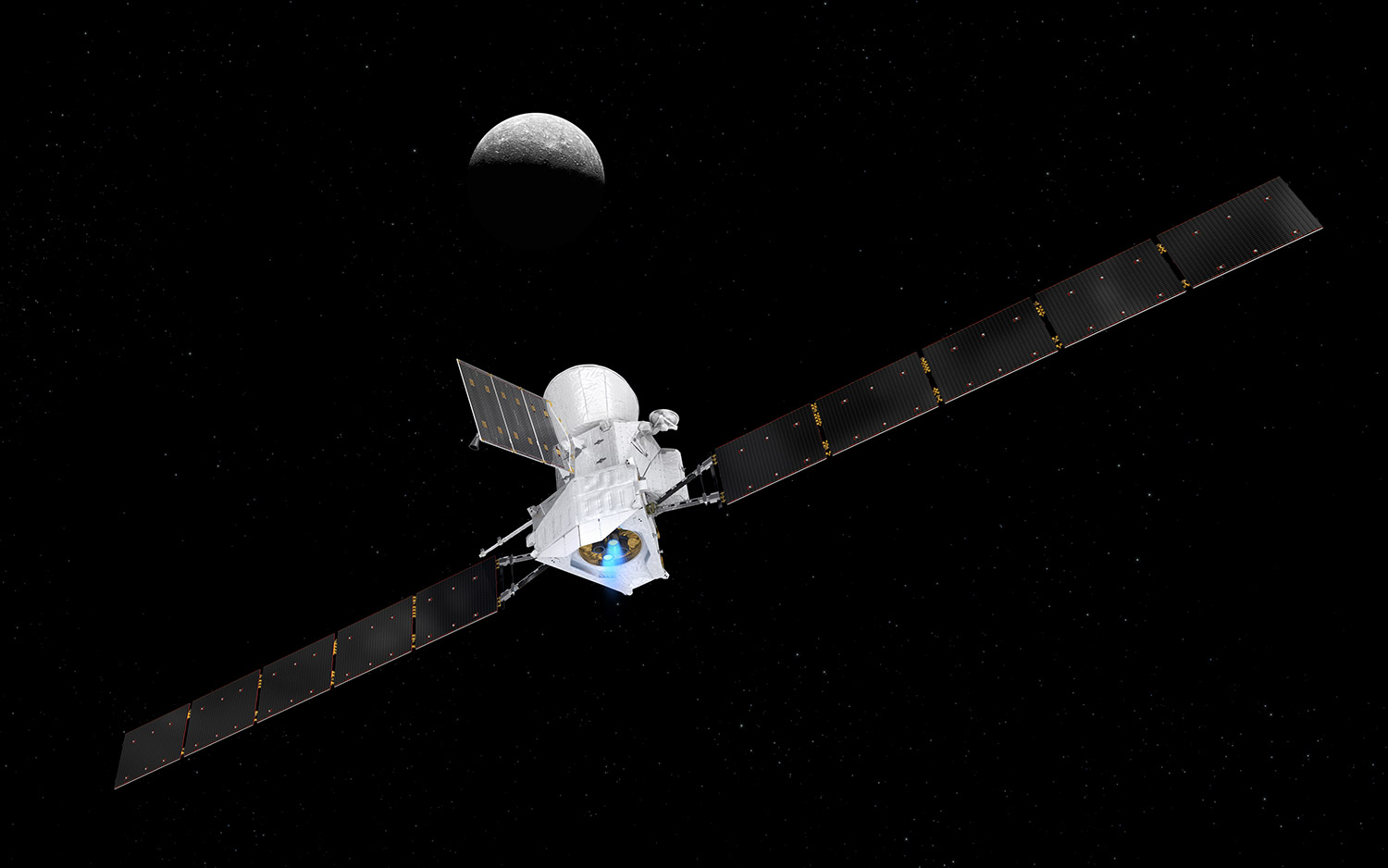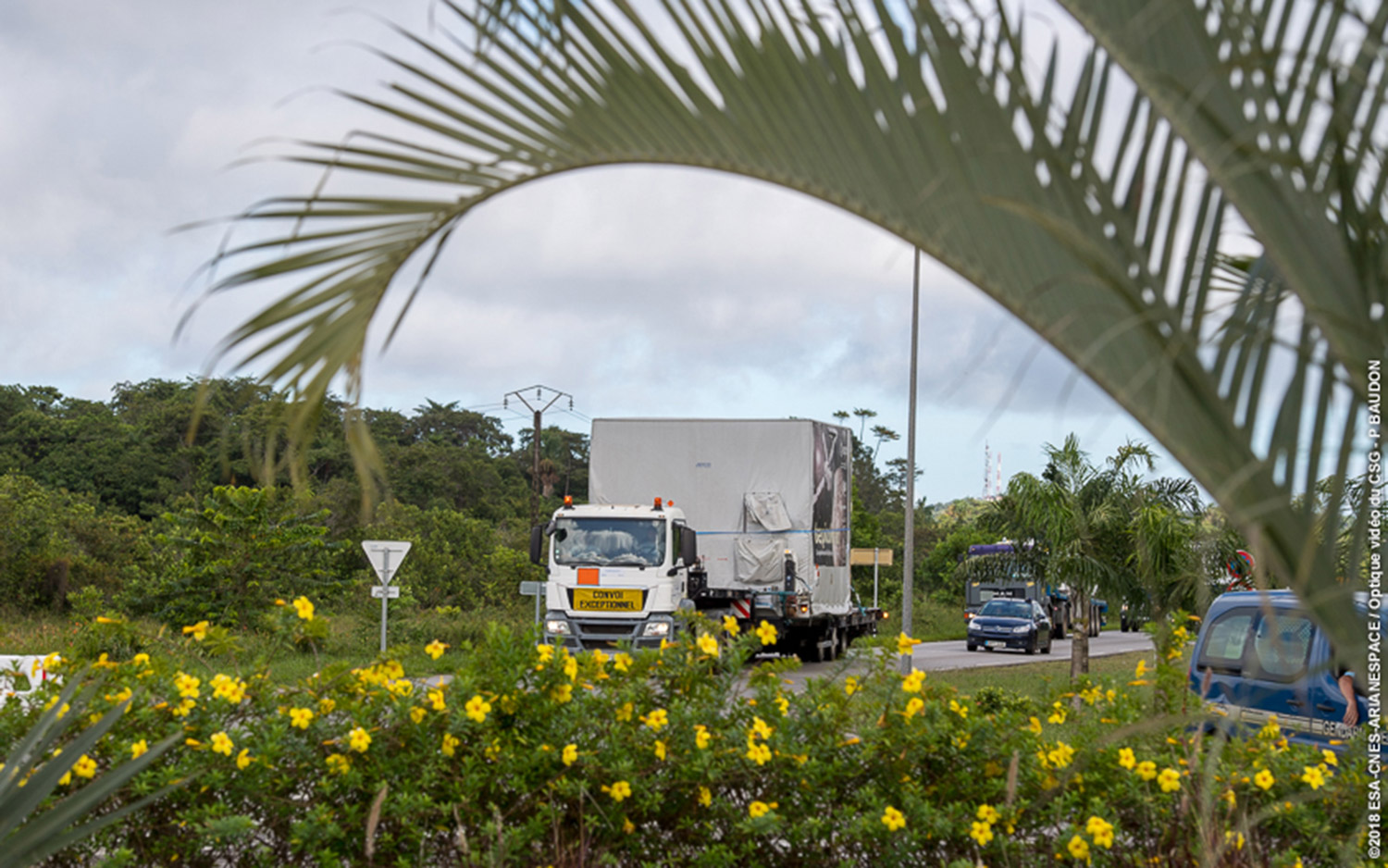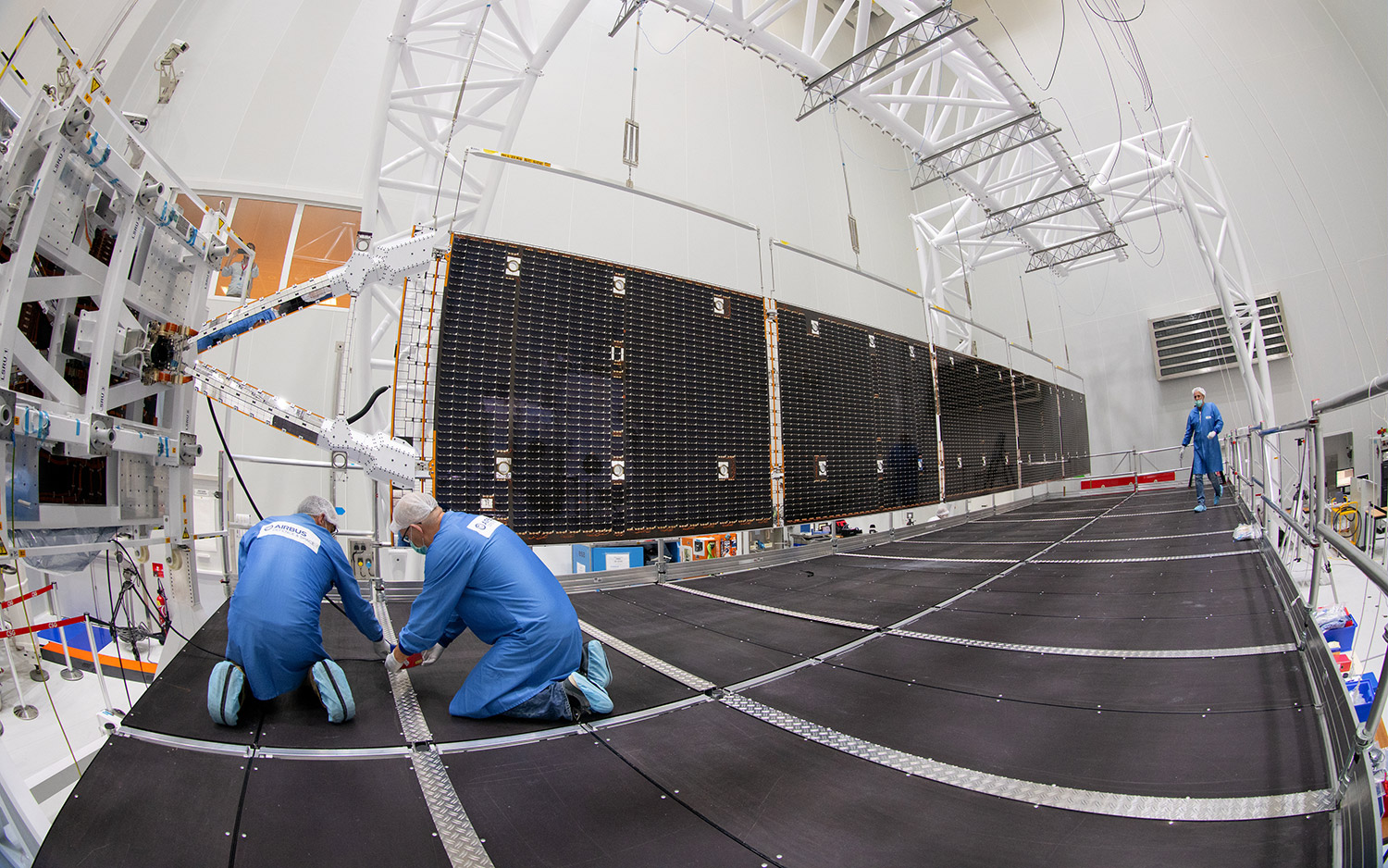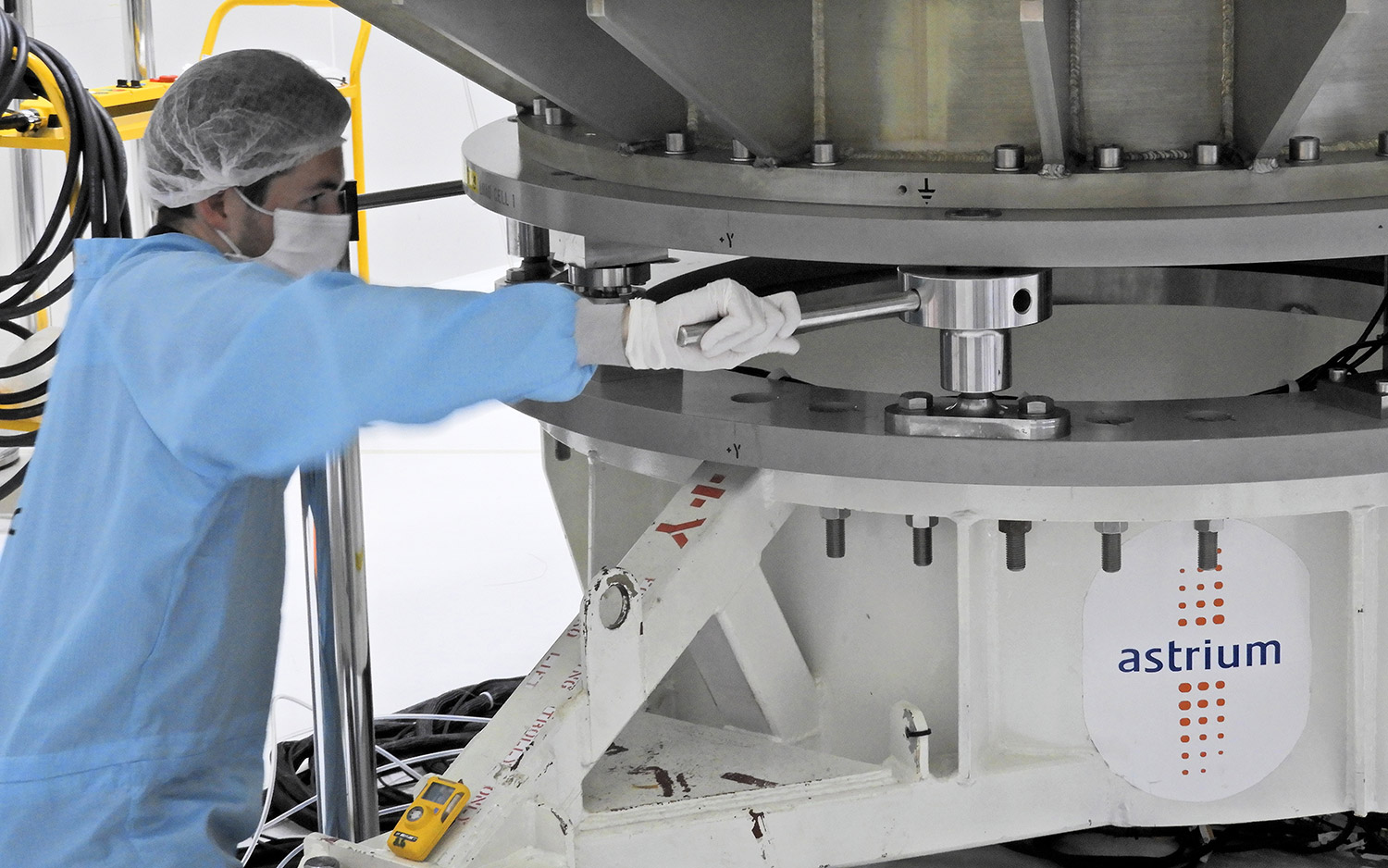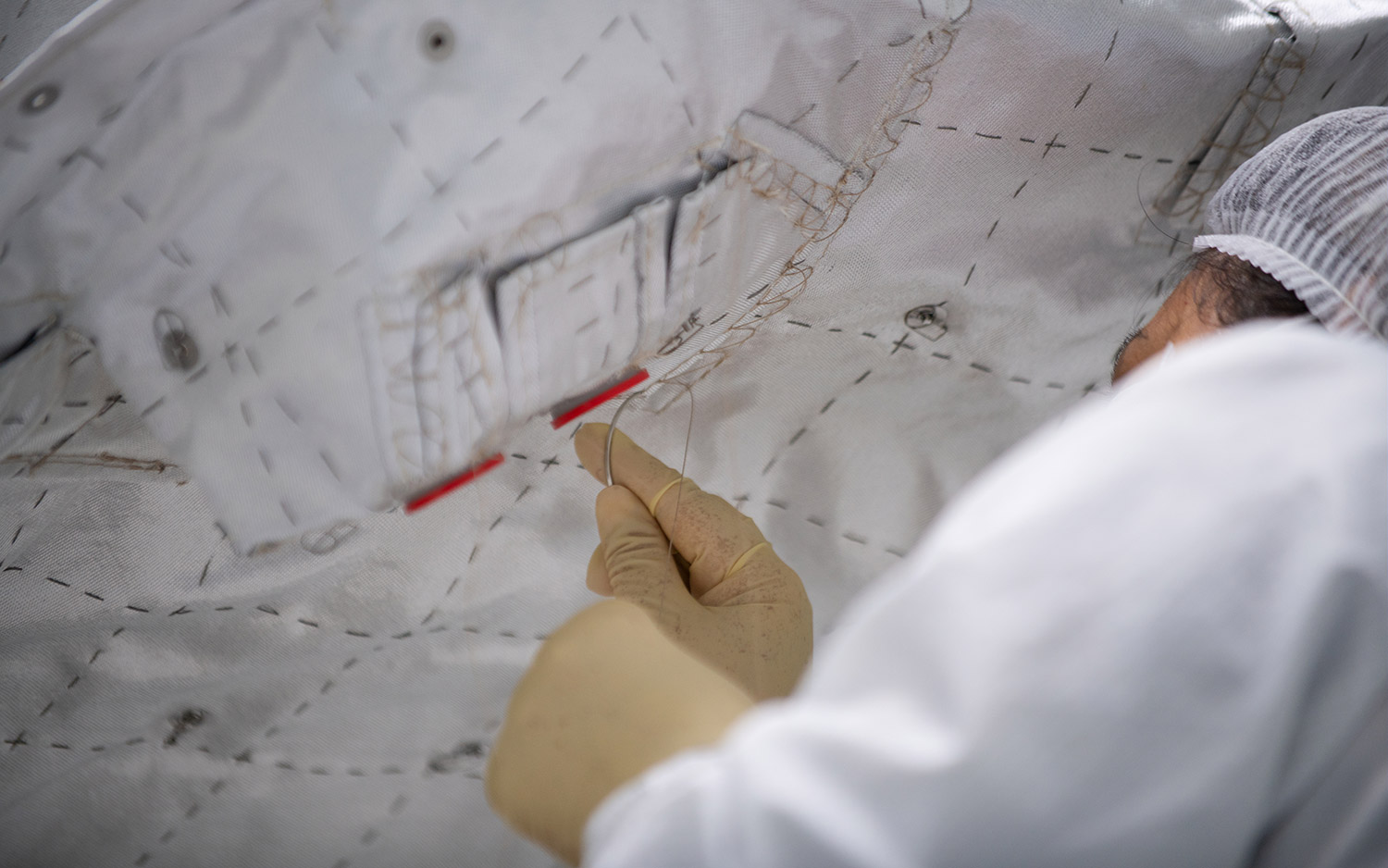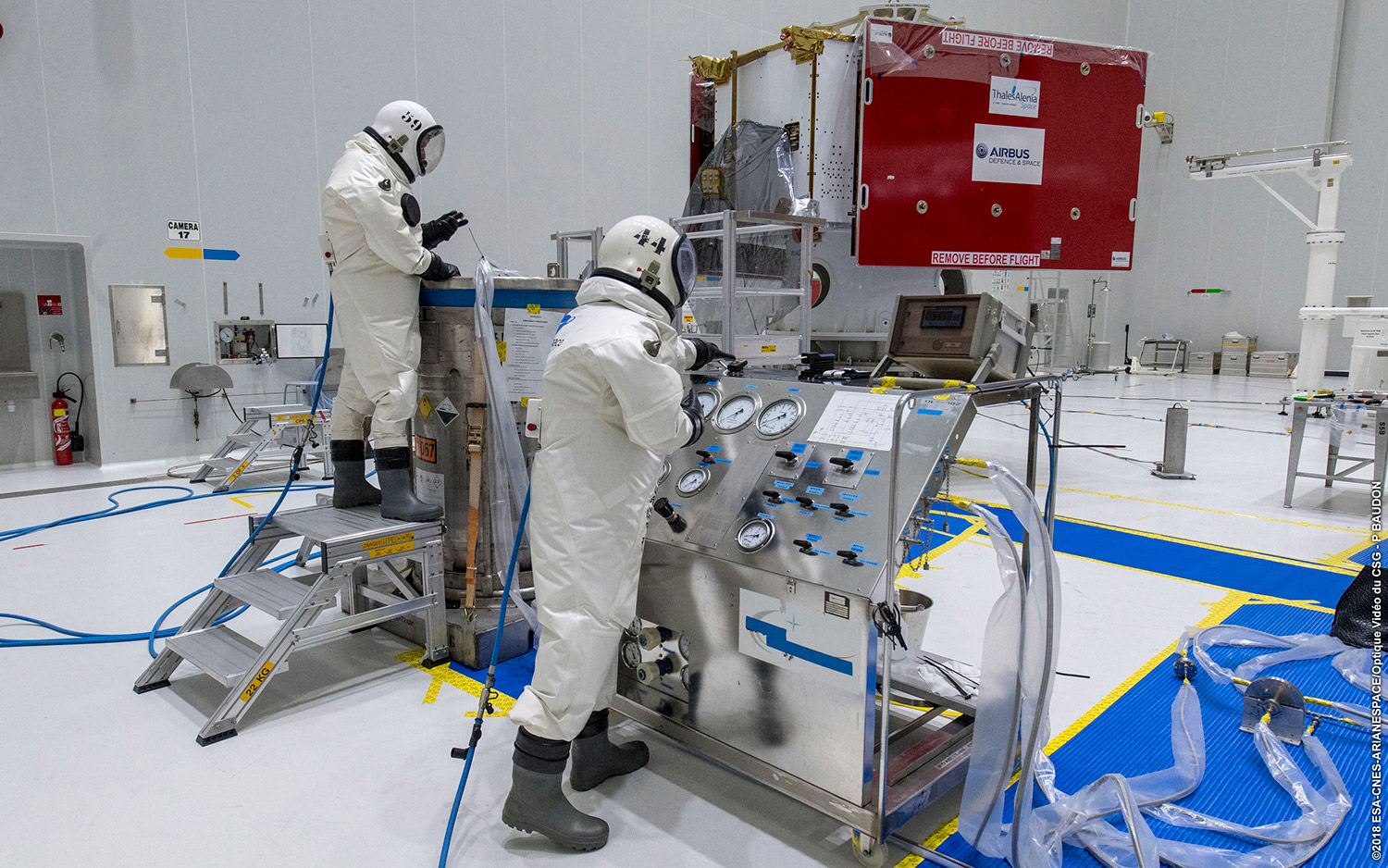BepiColombo in Pictures: A Mercury Mission by Europe and Japan
BepiColombo at a Glance
Tiny Mercury is a strange planet that may hide secrets to how our solar system formed — and that's why the European and Japanese space agencies decided to build a pair of spacecraft to study it. The result is a new Mercury mission called BepiColombo, which will reach the innermost planet of our solar system in December 2025. Here's how the mission came to be.
Liftoff!
An Ariane 5 rocket launches the European-Japanese BepiColombo mission to Mercury from Europe's Spaceport at the Guiana Space Center in Kourou, French Guiana on Oct. 19, 2018.
Next Stop, Mercury
An Arianespace Ariane 5 rocket carrying the two BepiColombo Mercury spacecraft for Europe and Japan launches from Guiana Space Center in Kourou, French Guiana on Oct. 19, 2018.
BepiColombo arrives at its destination.
An artist's depiction of the BepiColombo mission reaching Mercury, where it will separate into its two constituent spacecraft: the European Space Agency's Mercury Planetary Orbiter and the Japan Aerospace Exploration Agency's Mercury Magnetospheric Orbiter.
Examining a planet
The European half of the BepiColombo mission, a spacecraft called the Mercury Planetary Orbiter (MPO), arrives in April in Kourou, French Guiana, for the mission's launch aboard an Arianespace rocket. MPO carries 11 instruments designed to probe Mercury's structure, geology and environment.
Soak up the sun
The two spacecraft that make up BepiColombo will be carried to Mercury by a transfer module that runs on solar power, following a carefully coordinated orbital trajectory. The solar power is harvested by two long, winglike panels.
Add some xenon
Another ingredient for the transfer module's long journey is xenon, which is used in the electric propulsion system fed by the solar panels. Here, an engineer adds xenon to the spacecraft in preparation for launch.
Breaking space news, the latest updates on rocket launches, skywatching events and more!
A stitch in time
Among other preparations for the BepiColombo launch at Kourou, French Guiana, the transfer module was sewn into thermal insulation blankets to protect delicate hardware from extreme conditions.
Together at last
Over the summer, the two spacecraft that make up BepiColombo were stacked together, a formation they will remain in until December 2025, when they separate to begin studying Mercury. Paired up, the spacecraft are about 20 feet (6 meters) tall.
Fueling up
Both the transfer module and the MPO spacecraft carry their own fuel — and that means a trip to the spacecraft gas station before the mission launches. The transfer module uses that fuel to help the spacecraft reach Mercury, and MPO carries fuel to allow it to deploy the smaller Mercury Magnetospheric Orbiter (MMO) once the pair reach Mercury.
Ready for launch
The BepiColombo mission hardware ready to be enclosed inside its rocket. All three pieces of the mission — the paired orbiters and the transfer module that carry them on their long journey — are stacked together. The transfer module is at the bottom of the pile, with the MPO in the middle and the MMO at the top of the stack.

Meghan is a senior writer at Space.com and has more than five years' experience as a science journalist based in New York City. She joined Space.com in July 2018, with previous writing published in outlets including Newsweek and Audubon. Meghan earned an MA in science journalism from New York University and a BA in classics from Georgetown University, and in her free time she enjoys reading and visiting museums. Follow her on Twitter at @meghanbartels.
